How to Keep Floor Heating Costs Low
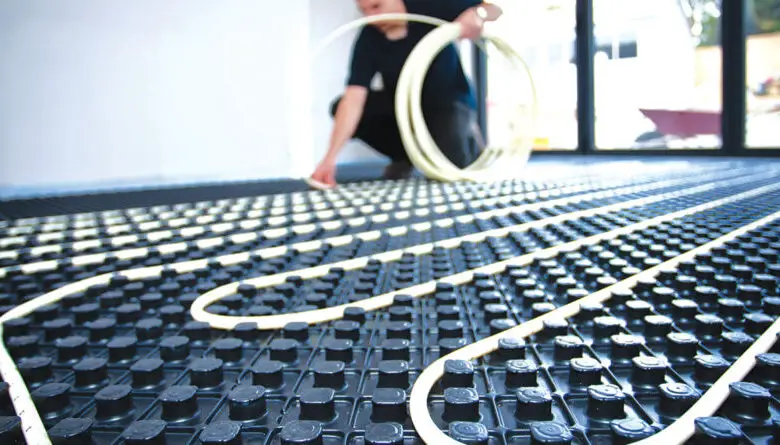
Floor heating systems are cleaner and more energy & cost-efficient means of heating your home. Unlike traditional HVAC systems, the underfloor heating system radiates warmth more evenly throughout your home. While some may classify it as a luxury in Canada, the benefits may outrun the costs in the long run.
In-floor heating systems come in various forms, but this also means varying costs for installation. On average, underfloor heating systems costs can range anywhere from $10 to $20 per square foot. Further, this cost may vary depending on the system’s scope, size, and usage.
For better understanding, this guide takes you through various aspects of in-floor heating systems along with some tips to keep floor heating costs low. AlpineCredits is also a great example of an organization that has been helping homeowners afford heating upgrades by offering the best rates on home equity loans.
What is an in-floor heating system?
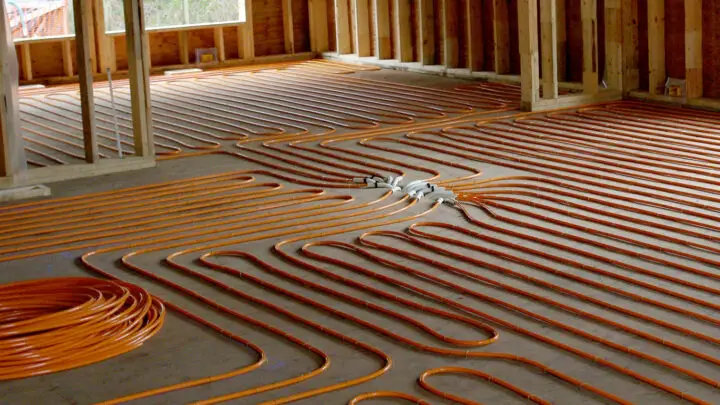
Underfloor or in-floor heating systems are meant for heating indoors using electrical or hydronic heating elements. Generally, the indoor heating is achieved through one of the following processes:
- Radiation
- Conduction
- Convection
The heating elements can be either cast in a floor slab or placed under the floor covering, or attached directly to a subfloor. Based on the heating element, underfloor heating systems are classified into three categories.
- Electric Systems
- Hydronic Systems
- Air-Heated radiant floors
Electric floor heating systems
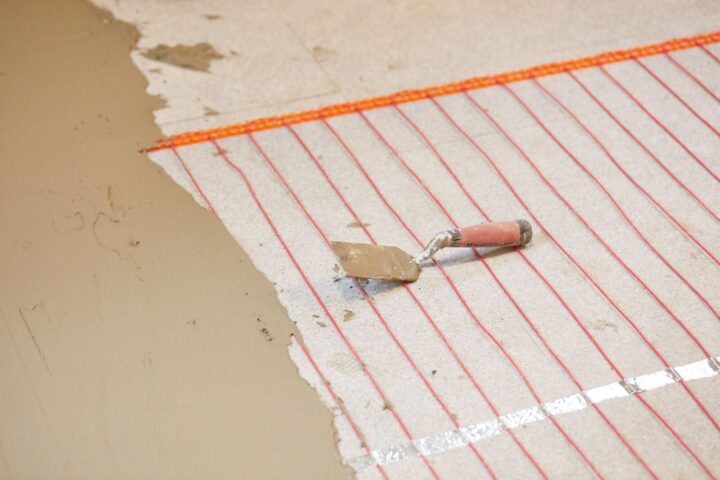
Electric systems use non-corrosive and thin resistant wires to radiate heat from under the floor. It comes in pre-formed cable mats, carbon films, or bronze mesh and is the most common and cheapest option for underfloor heating. On average, these heating systems cost anywhere between $7 and $12 per square foot.
However, electric wires of these systems are more prone to damage, particularly in areas where you get a lot of foot traffic in your house. The repair cost may scale up if the elements are embedded in the flooring. Moreover, the cost of electricity in Canada adds more woes to its operation.
Running Costs: On average, an electric floor heating system costs 62 cents per sq ft each month to operate. Furthermore, most Canadians use it as supplementary thermal comfort, which could mean you might have to add costs of operating HVAC systems as well.
Hydronic radiant floor heating
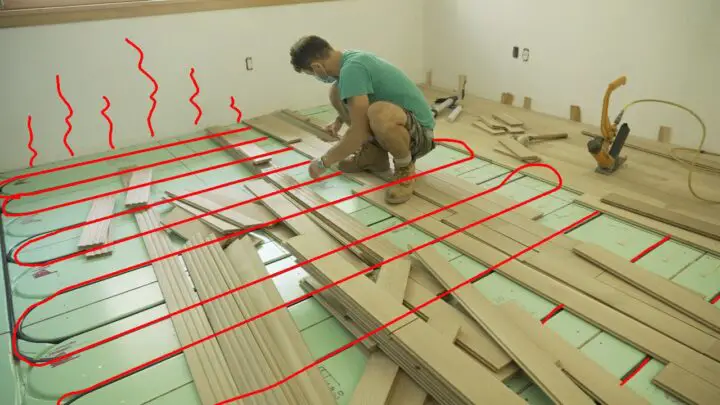
Hydronic radiant floor heating systems use hot water pumped through a series of tubes to radiate heat. The network of pipes can be attached to your subfloor or embedded into the concrete. While installing a hydronic system is costly, its running cost is low compared to an electric underfloor heating system. The installation costs an average of $20 to 25 per square foot.
Running costs: It costs approximately 23-35 cents to run per square foot each month.
Air-heated radiant floors
As the name suggests, it uses a network of tubes to circulate hot air under the floor. It costs approximately $20 per square foot to install an air-heated radiant flooring system. However, this system retains less heat and faces leakage problems that are hard to identify.
Running Costs: Air-heated radiant floor monthly operating costs range from 30 cents to 65 cents per square foot.
How to minimize in-floor heating costs
Underfloor heating systems remain a costly affair due to the material and complex installation process. Sometimes, floor replacement is the only option to embed the In-floor heating installation.
Therefore, it is advisable to weigh various aspects before installing a floor heating system. Here’s some recommendations on keeping in-floor heating costs affordable.
Set up a smart thermostat
A smart thermostat ensures maximum energy saving by running the heater as and when required. You can also control the heater remotely and monitor the temperature through mobile apps. In this way, you can save up to 50% of your electricity costs spent on in-floor heating.
Floor insulation
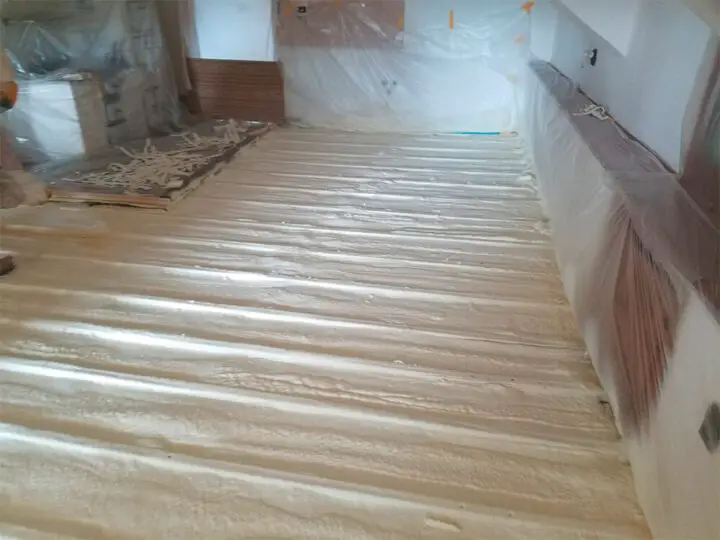
Floor insulation is another viable approach to retain the heat for a longer duration by decreasing the heat loss. The mechanism is the same as using blankets to keep you warm in signers. Insulating boards trap the In-floor heat, ultimately increasing the heat-up period. In turn, your floor remains heated for a longer duration without wasting energy.
Do not compromise on quality
While the choice of in-floor heating depends on your needs and budget, it is advisable to buy the best system within your budget. Installing cheap systems may save you a few dollars initially; the key is to think long-term.
For instance, electric heating systems come at attractive prices, but running and repairing costs can quickly become a hassle. Having said that, it doesn’t mean electric in-floor heating systems are ineffective. It is a comparative statement between electric and hydronic systems in terms of running costs.
Use tile or stone flooring
You have to be more cautious while installing in-floor heating systems on wood floors. As wood is more vulnerable to damage due to temperature change, it complicates the whole process. In contrast, tiles and stones are sturdy and radiate more heat than other materials. They are also less at risk for moisture or heat-related damages.
Limit the scope
Do you need floor heating systems in the whole house or some particular area? Ask such questions before installing radiant floor heating systems. One or two rooms with In-floor heating systems not only save in terms of installation but running costs as well.
Is in-floor heating systems worth the money?
Yes, according to the U.S Department of energy, radiant heating is way better than forced-air heating due to the following reasons:
- It eliminates duct losses usually seen with traditional furnaces.
- It is preferable for people with allergies as it doesn’t circulate allergens like forced air systems.
- Hydronic floor heating systems save significantly in terms of energy costs.
- Hydronic floor heating systems can be run without electricity with the help of solar water heaters, standard gas- or oil-fired boilers, and wood-fired boilers.
Endnote
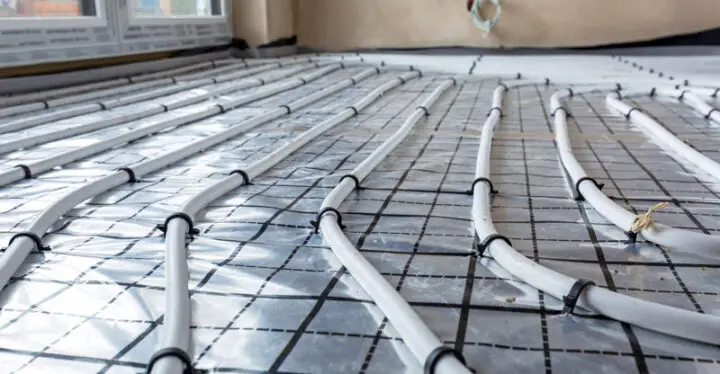
Considering the benefits of in-floor heating systems, it is a valuable investment. Moreover, you adopt a cleaner and more efficient option. However, this luxury comes at a cost. Material, installation, and labour costs can add up to roughly $20,000 to install an electric floor heating system in a 2,000-square-foot home. In the case of a hydronic heating system, it can be double the amount.
Most people look for some or other kind of financing to undertake this project. Amongst all, tapping into home equity can be one of the quickest and cheapest ways of securing credit for your next big heating renovation.
